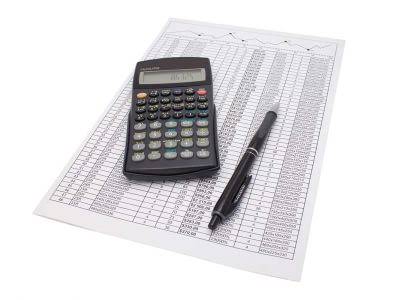
The Double Declining Balance Method (DDB) is a form of accelerated depreciation in which the annual depreciation expense is greater during the earlier stages of the fixed asset’s useful life. In summary, when employing the double declining balance method, accountants should be aware of mid-year depreciation adjustments and the impact of the time-value of money on a company’s finances. By understanding these advanced considerations, the DDB method can be applied effectively to ensure an accurate representation of an asset’s depreciation and its financial impact over time.
Double Declining Balance Depreciation Formula

As years go by and you deduct less of the asset’s value, you’ll also be making less income from the asset—so the two balance out. You get more money back in tax write-offs early on, which can help offset the cost of buying an asset. If you’ve taken out a loan or a line of credit, that could mean paying off a larger chunk of the debt earlier—reducing the amount you pay interest on for each period. Our AI-powered Anomaly Management Software helps accounting professionals identify and rectify potential ‘Errors and Omissions’ on a daily basis so that precious resources are not wasted during month close. It automates the feedback loop for improved anomaly detection and reduction of false positives over time. We empower accounting teams to work more efficiently, accurately, and collaboratively, enabling them to add greater value to their organizations’ accounting processes.
- It’s important to accurately estimate the useful life to ensure proper financial reporting.
- The Double Declining Balance (DDB) Method is a system designed to accelerate the cost recovery of an asset’s depreciable base.
- This reflects that some assets are most useful, and therefore lose value more rapidly, in their initial years.
- Enter the expected salvage value (also known as residual value) of the asset at the end of its recovery period (without dollar sign or commas).
Calculating Depreciation Expense Using DDB

For example, if you buy a piece of equipment for $10,000 and expect it to last 10 years with no salvage value, you’ll charge $1,000 to depreciation each year. Each year, when you record depreciation expenses, it lowers your business’s reported income, potentially reducing your taxes. Make sure to check with a Accounting for Marketing Agencies tax professional to get this right and make the most of possible tax benefits.
Excel Template for Calculation
- Each year, apply this rate to the remaining undepreciated balance of the asset.
- Under the DDB depreciation method, book value is an important part of calculating an asset’s depreciation, as you’ll need to know the asset’s original book value to calculate how it will depreciate over time.
- The double declining balance method is considered accelerated because it recognizes higher depreciation expense in the early years of an asset’s life.
- In fact, as the name suggests, the DDB method results in a first-year depreciation expense of double the amount that could be expensed using the straight-line method.
- For instance, if a machine costs $10,000, has a five-year useful life, and no salvage value, the double declining rate of 40% results in a $4,000 depreciation expense in the first year.
Multiply this rate by the actual units produced or hours operated each year to get your depreciation expense. However, accelerated depreciation does not mean that the depreciation expense will also be higher. Instead, the asset will depreciate by the same amount; however, it will be expensed higher in the early years of its useful life. The depreciation expense will be lower in the later years compared to the straight-line depreciation method. In summary, the choice between the DDB and straight-line depreciation methods depends on a company’s specific financial goals and strategies. Ultimately, businesses must consider their unique circumstances when selecting the most appropriate depreciation method.
DDB, or double declining balance method Double Declining Balance, employs a consistent rate to the diminishing book value of an asset, which results in ever-decreasing annual depreciation costs. On the other hand, the straight-line depreciation method disperses the cost of an asset in an even manner across its predicted lifespan. The essence of DDB lies in this acknowledgment, setting it apart from linear depreciation methods and tailoring depreciation to match an asset’s real-world wear and tear more closely. In summary, understanding these advanced topics helps ensure accurate financial reporting and compliance with accounting standards.
After almost a decade of experience in public accounting, he created MyAccountingCourse.com to help people learn accounting & finance, pass the CPA exam, and start their career. Download this accounting example in excel to help calculate your own Double Declining Depreciation problems. As you can see the straight-line depreciation must bookkeeping be calculated before the DD method can be used.

Tickmark, Inc. and its affiliates do not provide legal, tax or accounting advice. The information provided on this website does not, and is not intended to, constitute legal, tax or accounting advice or recommendations. All information prepared on this site is for informational purposes only, and should not be relied on for legal, tax or accounting advice. You should consult your own legal, tax or accounting advisors before engaging in any transaction.


